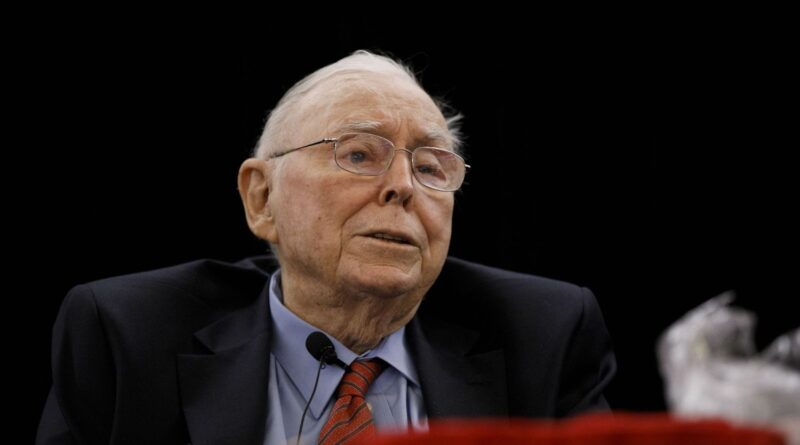Understanding the rule 50% drop: Insights by long -time partner Warren Buffett
:max_bytes(150000):strip_icc():format(jpeg)/GettyImages-1124907087-000513734fb64315aca81f42fc444eff.jpg)
Charlie Munger, Berkshire Hathaway Inc. (Brk.a, Brk.b) Vice -President and long -term man Warren Buffett, claimed that investors must be prepared for a brotal reality: if you cannot stomach at a 50% portfolio decrease, results.
While much hope for an easy journey to wealth, the Munger’s rule remains one of the simplest and most demanding tests for anyone who will invest in shares for a long time.
50% test drop that separates the winner from the losers
“You can say that if you are not willing to respond to a decline in market prices by 50% to three times a century, you must not be a joint shareholder and clean the average result you get,” Munger BBC said in 2009. In the face of such a huge decline, not only the theoretical financial crisis in 2008, the shares of Berkshire Hathaway have lost more than half of their value, as well as countless other high -quality companies.
“The 50% decline is not fun, but it is part of investment,” said Taylor Kovar, a certified financial planner and CEO of 11 Financial, said Investopedia. ”If you stick to this long enough to see real growth, you can when it becomes rough. “The rule is simple objectives forcing investors to face their real risk tolerance, especially on panic markets.
Tip
More risk investors should consider diversified bond funds, savings accounts with high yield or CD for stability.
Investors WHYNY Failed Munger’s brutal standard
Historically and the smallest market artists faced a deep decline. As Kovar explained, “Berkshire Hathaway, Amazon, Apple – all of them – had 50% drops at one point. That doesn’t mean they were bad investments. This means the market is going through cycles.”
However, most investors sell during these drops, lock losses and lack possible reflection. Munger’s point: A large investment means surviving temporary pain, trusting the foundations and not shaking volatility.
Preparation is everything. “We focus on several foundations,” Kovar said. “Make sure no single investment can destroy the whole plan. Keep some liquidity, so there is no press that can be sold in the wrong time. And it will always have a plan for the market to swing.”
Coaching for behavioral finances can help investors maintain perspective when the subtitles are scary, Kovard said. He also noted that he knew when to get rid of a drop of versus, when to reduce losses to the foundations. “If society still has strong leadership, healthy balance and long -term potential, the cream on the drop is an opportunity to buy. But if it has changed that the principles have changed … Maybe it’s time to move on,” Kovar said.
The cost of playing too safe
Many investors, on the lookout of volatility, will decide on safer assets over the shares. Over time, however, excessive deposit may undermine the formation of wealth. Munger has made his points because those who can withstand a decline tend to earn revenues that cannot defeat inflation or build meaningful long -term wealth.
Playing safe can protect you from a short -term bread, but that could also mean seating for averageness and missing the biggest recovery on the market.
Bottom line
Munger’s 50% drop rule is not just wisdom on the market; It is a intestine that separates emotional investors from recognized builders of wealth. Historically and the best companies faced a massive decline, and those who followed were rewarded with other profits.
Investors who are preparing for the market unrest and the building of emotional resistance can better navigate inevitable reduction and earn on better prospects for long -term growth.
